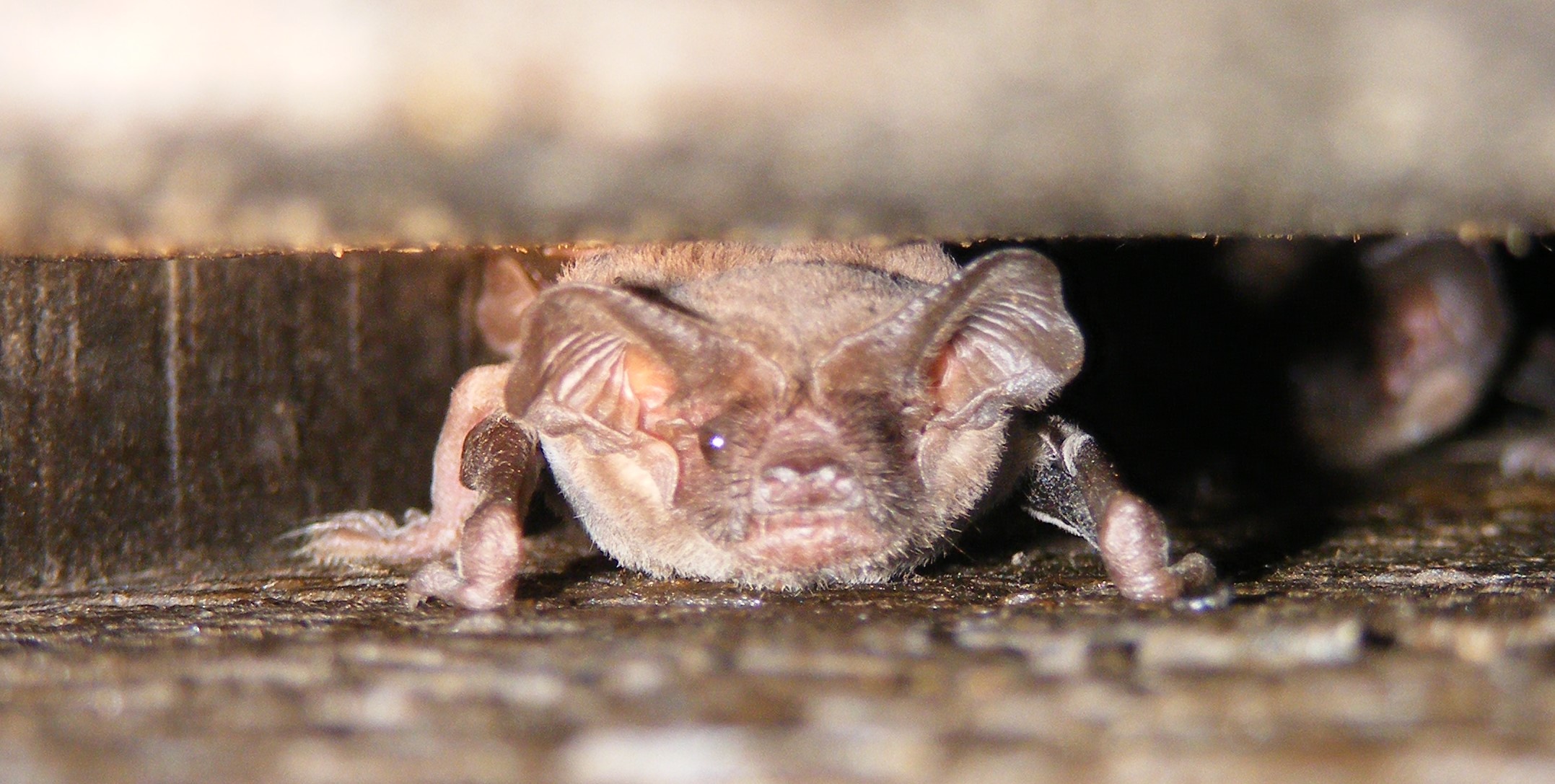
Bats and Rabies
Bats are generally nocturnal animals that prefer to roost during the day in isolated, naturally occurring crevices of caves, cliffs, and tree hollows. However, they may also be found in attics, roofs, soffits, walls, unfrequented buildings, etc.
There are 14 bat species that call South Carolina home. Common bats found in buildings in SC are Big Brown Bats, Evening Bats, Brazilian Free-tailed Bats, and sometimes Little Brown Bats. Learn more at: www.dnr.sc.gov/wildlife/bats. Seasonal bat activity depends on the species, but in general, it is common to experience an increase of bat sightings during mid-June to November.
An encounter with a bat can happen at any time. Although most bats do not have rabies, rabies is still a very real and fatal disease. Per the Centers for Disease Control and Prevention, 70% of the human rabies infections reported in the United States since 1960 have been attributed to bat exposures. Rabies is preventable if action is taken prior to a person becoming ill. Once symptoms start, the disease is nearly always fatal.
A bat that is active by day, found where bats are not usually seen, or is unable to fly is far more likely to be rabid. There is no guarantee that a rabid bat will behave any differently than a healthy bat, and it cannot be determined if a bat has rabies just by looking at it. Because bats have small teeth, people, especially children, may not realize when they have been bitten by a bat. Bat contact/exposure should be considered when:
- Persons wake up to find a bat in their room;
- A bat is found where children, pets, or persons with impaired mental capacity (intoxicated or mentally disabled) have been left unattended; and/or
- A pet or person has been in direct contact with a bat.
Bats in Buildings
To help minimize potential rabies exposures from bats, it’s important that home and property owners take steps to prevent bats from entering and roosting in buildings where people visit, work, or stay overnight. This includes homes and properties that are used for vacation rentals or part-time residences.
Steps to Prevent Bats from Entering a Building
- The best option is to contact your local Wildlife Control Operator to inspect your home.
- Carefully examine your home for holes that might create an entrance for bats. Seal any openings larger than a quarter inch by half inch.
- Seal electrical and plumbing holes.
- Ensure all doors to the outside close tightly.
- Cover outside entry points in attics and buildings.
- Bats are frequently found in terracotta roofing tiles. Consider sealing each gap created by the barrel shape of the terracotta roofing tiles.
Please visit the CDC website for more information on steps you can take to prevent bats in your rental property.
Contact your local Public Health office, visit the DHEC rabies webpage, or visit the CDC rabies webpage for more information.